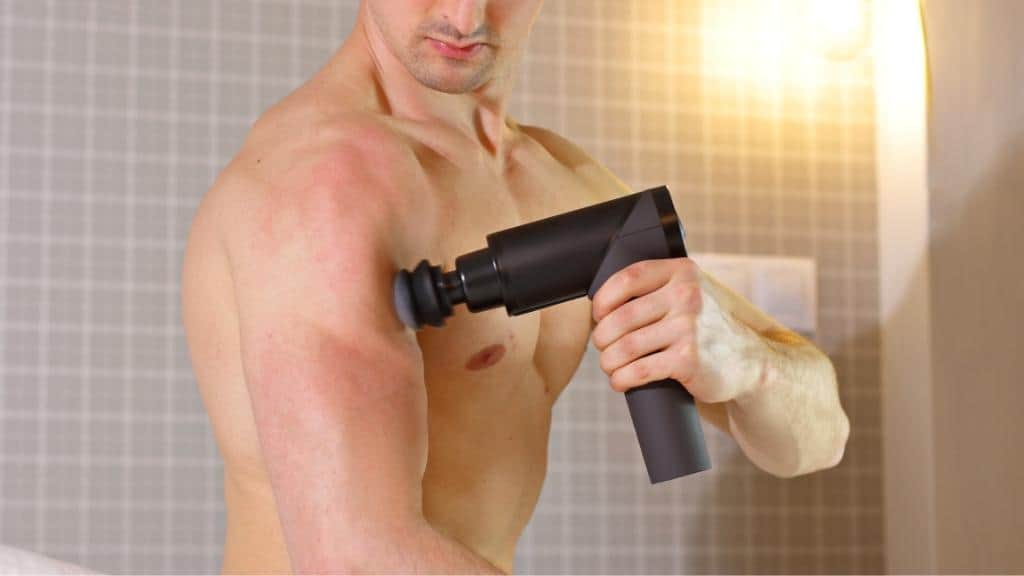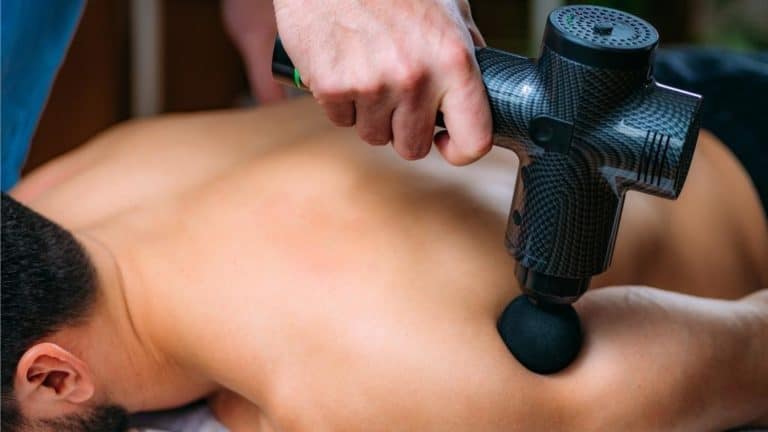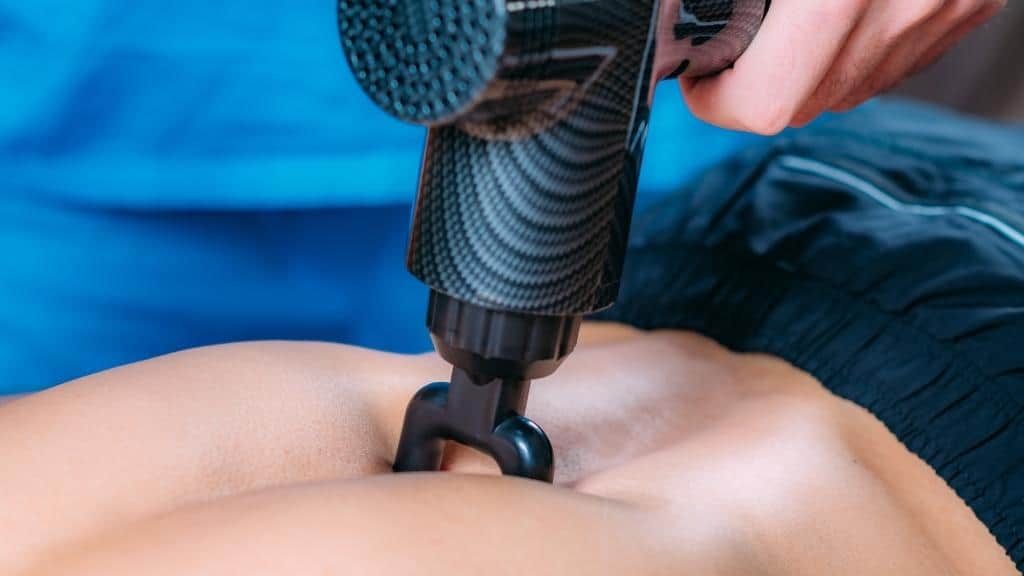A massage gun can be an extremely effective tool for knots. By affecting specific areas of muscle tissue, a massage gun can provide deep, affected relief that can help to break up knots and ease tension.
Additionally, the use of a massage gun can be much easier and more comfortable than using a foam roller or lacrosse ball, making it an ideal option for those who want an easy, convenient way to affect knots. In this post, I’ll teach you how to use a massage gun for knots so you can start taking advantage of it yourself.
The action of massage guns for knots is similar to that of other muscle recovery tools but they provide more affected relief and are easier to use. Muscle knot massagers also allow for easier spot affecting.
When using a massage gun on knots, it is important to start slowly and increase the pressure gradually. It is also important to avoid sensitive areas.
Contents
Do Massage Guns Work on Muscle Knots?
There is some evidence that massage guns for muscle knots can be effective in treating muscle knots. A study published in the Journal of Physical Therapy Science found that massage guns were effective in reducing muscle soreness and improving range of motion in participants who used them after exercise.
Another study, published in BMC Musculoskeletal Disorders, found that massage guns were effective in reducing pain and improving range of motion in people with upper back pain.
Overall, the research suggests that massage guns may be a helpful tool for treating muscle knots. If you’re considering using a massage gun, be sure to speak with your doctor first to ensure it’s safe for you.
What is a Muscle Knot?
Muscle knots, also known as trigger points, are small, painful areas of muscle tissue that can feel like a hard, painful lump. Muscle knots are often the result of tension or repetitive motions, such as typing or lifting. They can also be caused by injury or inflammation. Knots can be painful and cause discomfort.
There are a few ways to get rid of muscle knots, but one of the most effective is myofascial release. This is a type of massage that applies gentle, sustained pressure to the connective tissue, which can help to eliminate pain and restore motion.
If you don’t have access to a massage therapist or physical therapist, you can also try doing this yourself with your hands, a foam roller, or a massage gun.
How to Use a Massage Gun for Knots: Guide
If you’re someone who often suffers from knots, a massage gun can be a game-changer. Using a massage gun on knots can help to break up the tension and help you feel more relaxed. But it’s very important to use it correctly so it doesn’t do any harm.
Safety techniques
There are a few safety techniques to use a massage gun for knots:
- start with the lightest setting and increase the intensity as needed;
- use the massage gun on knots for no more than 15 minutes at a time;
- apply the massage gun to the knot in a circular motion;
- drink plenty of water before and after using the massage gun to help reduce swelling;
- avoid using the massage gun on injured or broken skin.
How to get a knot out of a muscle: a step-by-step guide
To remove muscle knots with the massager, you need to follow several steps:
- Warm up before using massage tools. Before using your massage gun, make sure to warm up with some basic stretches or a few minutes of walking. This will help improve blood flow and make your muscles more receptive to the massage.
- Start with low pressure. Do not go immediately to deep tissue or “hurts so good” pain when you’re using a massage gun. Find the trigger point, and then start using your massager on low power on the area. Gradually increase the strength of the massage depending on how much pressure your muscles can take.
- Trigger point. Hold the massager over the knot and move it slowly back and forth. Try to apply as much pressure as possible to the sore muscle without making it painful. Once you hit that optimal spot for how much pressure your muscles can handle, hold the device there for at least 30 seconds up to 2 minutes.
- Working deeper into the knot. Once you’ve found the tightest spot, apply pressure to the muscle with the massage gun and slowly increase the pressure until you feel the knot start to loosen. You may need to increase the pressure further to completely loosen the knot.
- Gentle massage. Once the knot is worked through, gradually decrease the strength of the massage. This will help increase blood flow to the muscle and reduce soreness after using the massage gun for knots.
FAQ

Does vibration help muscle knots?
When applied to the affected area, vibrations can help to break up the knots and improve blood circulation to the area. This can help to reduce inflammation and pain and improve the range of motion.
Is it good to massage muscle knots?
Yes, massage is good for muscle knots. It can help to loosen up your muscles and improve circulation. Massage therapy can also help to reduce pain and stiffness.
Can a back massager get rid of knots?
It depends on the person and the specific knot or knots. However, regular massage with massagers can help to reduce the number and severity of muscle knots.
Also read:
- How to Reset Massage Gun?
- Can a Massage Gun Help with Cellulite?
- Can a Massage Make you Feel Nauseous?
Bottom Line
If you’re someone who often gets knots in their muscles, a massage gun can be a handy tool to have around. While a traditional massage can help to loosen knots, a massage gun can provide more affected relief. It is important to know how to use the massage gun properly so that you do not cause any further damage to the muscle.
Do you have any experience using a massage gun for knots? Share it in the comments.


